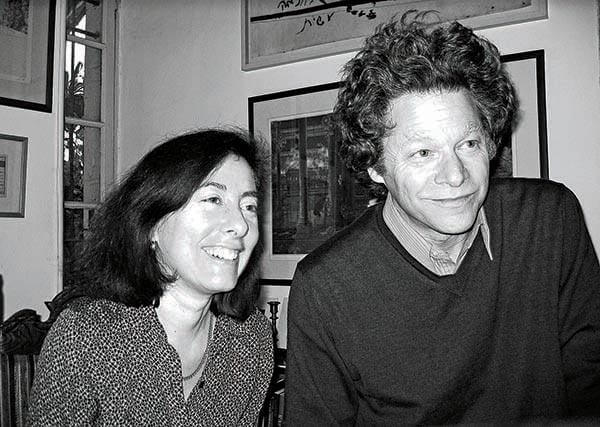By Joe Anuta
People are fascinated with junk.
Thrift stores and crowded yard sales are testament to this obsession in the 21st century, but in 1896, two globe-trotting Scottish sisters stumbled across one of the most important finds in Jewish history in what seemed like a pile of useless garbage in a room in Cairo.
That discovery and the ensuing research is part of a new book called “Sacred Trash: The Lost & Found World of the Cairo Geniza” by Peter Cole and Adina Hoffman, who are planning to give a talk next week at the Central Queens YM & YWHA at 67-09 108th St in Forest Hills.
“The Cairo Geniza represents the greatest discovery of Jewish manuscripts ever made,” Cole said. “We were both fascinated by the contents of the geniza and by the stories of the scholars who have devoted themselves to recovering this material over the course of the last century.”
The story, which has the international intrigue of an “Indiana Jones” film, began when the traveling twins, Agnes Lewis and Margaret Gibson, came across what looked like a document dumping ground in a room behind a wall in a Cairo synagogue.
They took one of the pages back to their home in Cambridge, England, and showed it to Solomon Schechter, a pre-eminent Jewish scholar from Romania, whose jaw likely dropped.
The page plucked from the seemingly useless pile of paper was actually a long-missing piece of an ancient Hebrew religious book.
“It launched him on a top-secret mission to Cairo,” Hoffman said, “where he went in search of the rest of the book and wound up encountering the geniza in its entirety.”
A “geniza,” is a term used for a storage place for written documents in ancient Jewish culture. In the case of the Cairo Geniza, which contained documents dating back to the 10th century, that space was a broom closet-sized room in the synagogue.
The idea comes from the belief that words had souls, and when documents became worn, they needed to be buried or entombed, just like a person, according to Cole and Hoffman.
The ancient Cairo Jewish community’s documents survived until the 19th century thanks to the dry climate and the belief that surfaced after time that the room was filled with snakes and possibly haunted.
In total, the geniza probably contained around 300,000 documents, and Schechter brought about 180,000 back to Cambridge.
In addition to religious texts, the geniza contained everyday written accounts as well.
“That means letters, business documents, poems, religious texts, medical prescriptions, magical amulets, marriage contracts, wills — you name it,” Cole said.
And the makeup of the geniza was so varied that the collection became a window into the past, allowing scholars a glimpse of what life was like for the Jewish community in Cairo over a thousand-year period.
“They were written by the rich and poor, the young, the old, the famous, the forgotten,” he said. “The manuscripts really reveal an entire world in this way.”
Cole and Hoffman will speak about the story of the geniza and their book May 3 at 1:30 p.m. The event is open to the public and a $6 donation is suggested.
Reach reporter Joe Anuta by e-mail at januta@cnglocal.com or by phone at 718-260-4566.

































